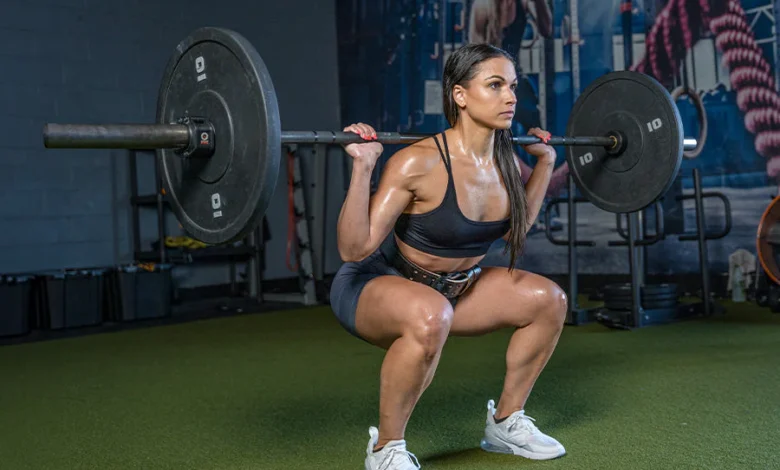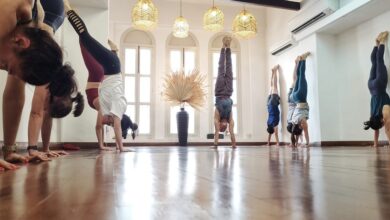Using Wearable Tech to Maximise Your Gym Fitness Program

Wearable technology is no longer just a trend — it’s an essential tool for enhancing performance, tracking progress, and improving accountability in your gym fitness program. From smartwatches and fitness bands to heart rate monitors and sleep trackers, wearables offer real-time insights that help you optimise every aspect of your training.
For busy professionals, students, and active seniors in Singapore, wearable devices can bridge the gap between guesswork and precision. This article explores how to use these devices effectively, the key metrics worth tracking, and how to avoid data overload while staying motivated.
Why Wearable Tech Matters in Fitness
In traditional training, people often rely on perceived effort or visual progress to judge results. While that works to a point, wearable technology introduces measurable accuracy to your workouts.
Key Advantages:
-
Real-time feedback on performance and recovery
-
Personalised training intensity levels
-
Motivation through goal tracking
-
Early detection of overtraining or fatigue
-
Improved accountability and habit-building
Wearables allow you to train smarter, not harder, which is particularly important in structured programmes.
Most Common Types of Wearable Devices
Depending on your goals, different types of wearables can support your fitness journey in unique ways.
1. Fitness Trackers
Basic bands that monitor steps, heart rate, and calorie burn. Great for beginners and daily activity monitoring.
2. Smartwatches (e.g. Apple Watch, Samsung Galaxy Watch)
Combine fitness tracking with advanced health analytics, app integration, and even ECG features. Suitable for multi-purpose users.
3. Heart Rate Monitors
Chest straps or wrist-based devices offering high-accuracy readings. Best for those doing high-intensity or endurance training.
4. Sleep and Recovery Trackers (e.g. Oura Ring, Whoop Strap)
Focus on measuring sleep stages, HRV (Heart Rate Variability), and overall recovery to guide your workout readiness.
Key Metrics You Should Track for Gym Success
Not all data is equally valuable. These are the most useful metrics for anyone serious about optimising their gym performance:
1. Heart Rate (HR)
-
Tracks cardiovascular effort
-
Helps regulate intensity in cardio or HIIT sessions
-
Resting HR indicates overall fitness level
Target Zone: 60%–85% of your max HR during workouts
Tip: Monitor how quickly your HR drops post-workout — faster recovery suggests improved endurance
2. Calories Burned
-
Useful for weight management goals
-
Can guide your nutrition strategy
Note: Device estimations are approximate, so use trends over time rather than daily numbers
3. Steps and Movement
-
Encourages non-exercise activity (e.g. walking during lunch breaks)
-
Complements structured gym workouts
Target: 7,000–10,000 steps per day, depending on lifestyle
4. Sleep Quality
-
Sleep impacts muscle recovery, energy, and performance
-
Wearables analyse deep sleep, REM, and total sleep time
Tip: Adjust workout intensity on poor sleep days to avoid overtraining
5. Heart Rate Variability (HRV)
-
Measures the time variation between heartbeats
-
High HRV = better recovery and nervous system balance
Low HRV signals fatigue or stress — ideal for taking a lighter session or rest day
6. VO₂ Max (available on advanced devices)
-
Measures aerobic capacity and cardiovascular health
-
Higher numbers indicate improved fitness and endurance
This is a long-term metric and is best tracked monthly rather than weekly.
Integrating Wearables Into Your Gym Fitness Routine
Technology works best when it’s woven into your existing habits. Here’s how to make wearables work for you without turning training into data overload.
Before the Gym
-
Check your recovery score (if supported)
-
Look at sleep trends to decide on workout intensity
-
Set a goal or challenge for the day (e.g. calorie target or HR zone)
During the Gym Session
-
Use real-time HR to adjust pacing
-
Monitor reps or sets with automatic tracking
-
Pause between circuits to review effort and time
After the Gym
-
Check HR recovery
-
Log perceived effort alongside data
-
Reflect on what worked well or what needs improvement
Facilities like TFX Singapore support technology-integrated training with structured classes and zones where heart rate monitoring can enhance group sessions.
How to Avoid Data Fatigue
One of the most common issues with wearable tech is information overload. To stay focused:
-
Choose 2–3 key metrics to prioritise (e.g. HR, calories, sleep)
-
Review weekly trends instead of obsessing over daily changes
-
Turn off unnecessary notifications or alerts
-
Use the app dashboard to summarise progress rather than diving into raw data
Remember, the goal is improved performance and well-being — not perfection.
Setting Tech-Driven Fitness Goals
Wearables are excellent for goal-setting because they provide measurable progress. Examples:
-
Daily: Reach 7,500 steps or burn 300 active calories
-
Weekly: Train in your target heart rate zone for at least 90 minutes
-
Monthly: Improve resting HR or increase VO₂ Max score
Visual charts and streak badges can keep you motivated without needing external validation.
Recommended Apps to Sync With Wearables
Pairing your wearable with supportive apps can enhance your tracking experience. Here are some suggestions:
-
MyFitnessPal: Syncs with wearables for calorie and macro tracking
-
Strava: Great for runners, cyclists, and those who want social accountability
-
Google Fit / Apple Health: Central dashboards for all fitness data
-
Fitbod / Strong: Tracks strength training workouts and suggests progressions
-
Calm / Headspace: Supports mental recovery alongside physical training
FAQ
Q. Do I need a wearable to succeed in a gym fitness program?
A. Not necessarily, but it helps. Wearables add structure and feedback, especially for people who want to track progress or have specific goals.
Q. Are fitness trackers accurate?
A. Most modern wearables are accurate for trends, but individual metrics (like calorie burn) can vary. Use them as guides, not absolutes.
Q. Which is better for gym workouts — a smartwatch or a fitness band?
A. Smartwatches offer more features and better app integration, while fitness bands are lighter and simpler. Choose based on your budget and goals.
Q. What if I find the data overwhelming?
A. Start small. Focus on one or two metrics, like heart rate and sleep. Once you’re comfortable, explore others gradually.
Q. Can wearable tech replace a personal trainer?
A. No. It’s a tool, not a coach. Wearables provide data, but they don’t correct your form, guide your progressions, or motivate like a human can.




